If you want to run programs that require GPU acceleration (like AI software) on your computer, you might need to install CUDA.
CUDA is a tool from NVIDIA that allows your graphics card to handle more tasks. This article will guide you step-by-step through installing CUDA 12.6 and the corresponding cuDNN 9.8 on Windows 10.
Why choose CUDA 12.6 instead of 12.8? Because 12.8 is the latest version and might not be fully compatible with all software yet, leading to compatibility issues. On the other hand, 12.6 is a relatively stable and up-to-date version. Of course, if you want 12.4 or 12.8, the installation method is similar; you can adjust the version number based on this tutorial.
Don't worry, even if you're not tech-savvy, you can get it done by following these steps! Let's get started!
Step 1: Check if Your Graphics Card is NVIDIA
Open Device Manager
- Right-click the "Start" button (the Windows icon) on the bottom-left corner of your desktop.
- In the menu that appears, select "Windows Administrative Tools - Computer Management" to open a window.
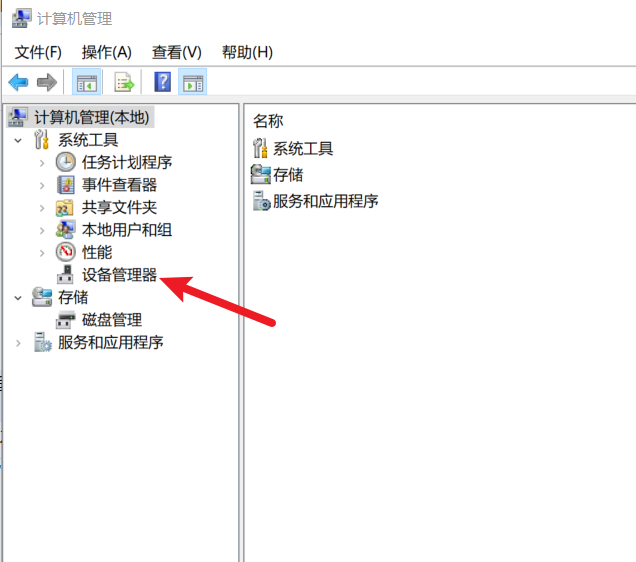
Find Graphics Card Information
- In the "Computer Management" window, click "Device Manager" on the left side, and then find "Display adapters" on the right. Click the small arrow in front of it to expand.
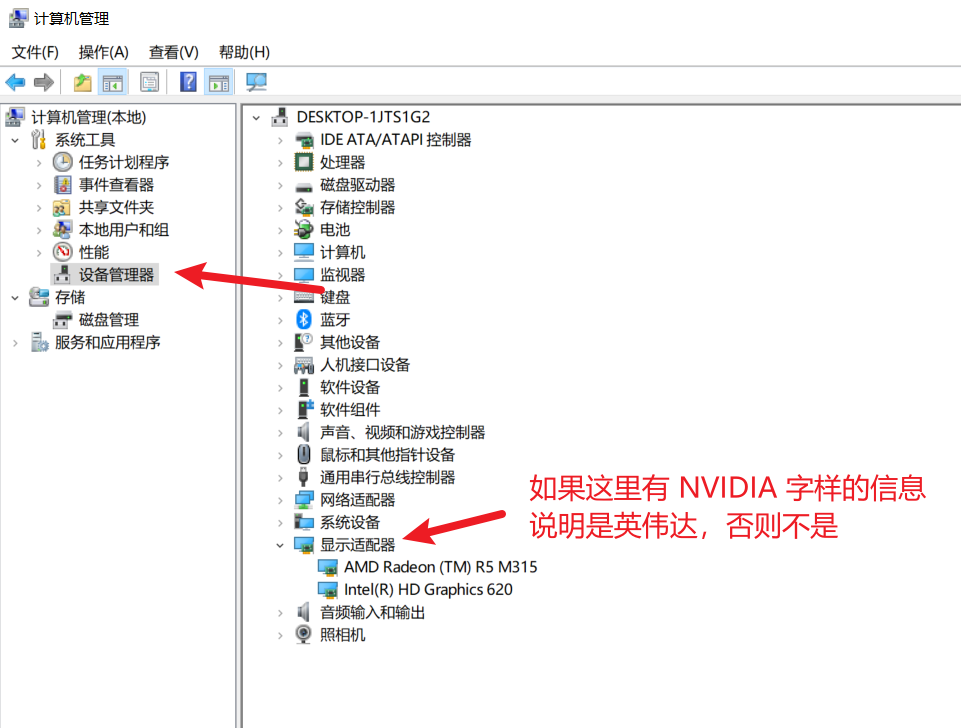
- See if it contains "NVIDIA," such as "NVIDIA GeForce GTX 1660."
- If yes, congratulations! Your graphics card is NVIDIA, and you can continue. If not (e.g., it shows "Intel" or "AMD"), then CUDA won't work, and this tutorial ends here.
- In the "Computer Management" window, click "Device Manager" on the left side, and then find "Display adapters" on the right. Click the small arrow in front of it to expand.
Step 2: Check and Upgrade Your Graphics Card Driver
Open NVIDIA Management Software
- If you have installed the graphics card driver, there might be a green "NVIDIA" icon in the taskbar (next to the time) on the bottom-right corner of your desktop. Right-click it and select "NVIDIA GeForce Experience" to open it.
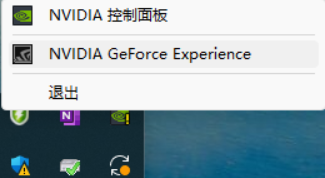
- If not, skip to step 3 to download it manually.
- If you have installed the graphics card driver, there might be a green "NVIDIA" icon in the taskbar (next to the time) on the bottom-right corner of your desktop. Right-click it and select "NVIDIA GeForce Experience" to open it.
Check Driver Version and Upgrade
- After opening, click "Drivers" on the top-left corner.
- It will show the current driver version (e.g., "546.33"). If there's a new version, there will be a "Download" button.
- Click "Download" and follow the prompts to install. Restart your computer after installation.
No Software? Download Driver Manually
- Open your browser and enter the website: https://www.nvidia.com/en-us/geforce/drivers/ to download the driver upgrade software and install it.
- Open it after installation and follow the instructions to check for driver updates.
Step 3: Check for Existing CUDA and Determine the Maximum Supported Version
Open Command Prompt (CMD)
- Press and hold the Windows key + R on your keyboard to bring up the "Run" window.
- Type
cmdand press Enter to open a black command prompt window.
Check CUDA Version
- Enter the following in the command prompt:
nvcc -V Press Enter. If it displays something like
Press Enter. If it displays something like Cuda compilation tools, release 12.6, V12.6.xxx, it means CUDA is already installed, and the version is 12.6. If it displays "'nvcc' is not recognized as an internal or external command," it means it's not installed, so proceed with the installation steps below.
- Enter the following in the command prompt:
View the Maximum Supported CUDA Version
- Enter the following command:
nvidia-smi Press Enter. A table will be displayed, with "CUDA Version" (e.g., 12.6 or higher) in the top-right corner. This indicates the highest version supported by your driver. As long as it's 12.6 or higher, you can install the CUDA 12.6 we want.
Press Enter. A table will be displayed, with "CUDA Version" (e.g., 12.6 or higher) in the top-right corner. This indicates the highest version supported by your driver. As long as it's 12.6 or higher, you can install the CUDA 12.6 we want.
- Enter the following command:
Step 4: Download and Install CUDA 12.6
- Download CUDA 12.6
- Open your browser and go to the NVIDIA official download page: https://developer.nvidia.com/cuda-downloads?target_os=Windows&target_arch=x86_64&target_version=10&target_type=exe_local
- Select "Windows" > "x86_64" > "10" > "exe (local)" and click "Download".
- The file name will be something like
cuda_12.6.x_xxx.xx_windows.exe, and it will be downloaded to your "Downloads" folder.
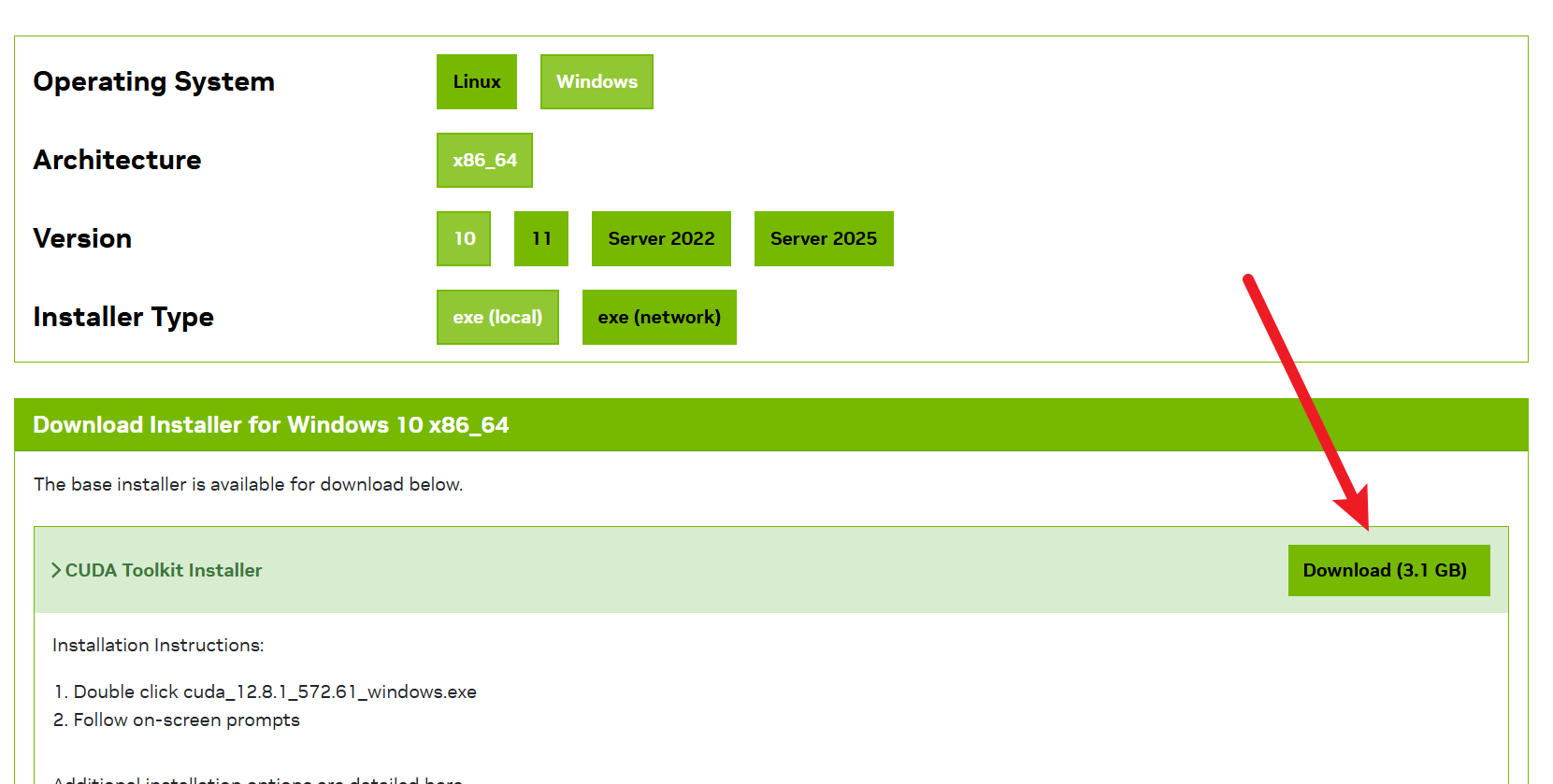
- Install CUDA (Custom Mode)
- Double-click the downloaded file to open the installation window, agree to the terms, and click "Next."
- Select "Custom (Advanced)" installation and click "Next".
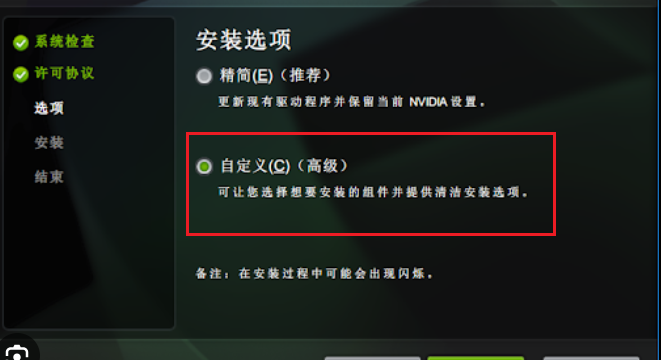
- In the option list, only check the first row, "CUDA," and uncheck all other options to avoid conflicts.
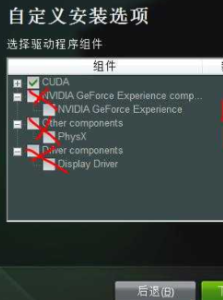
- Then click the
+sign in front ofCUDAand uncheckVisual Studio Integration, otherwise the installation is prone to failure.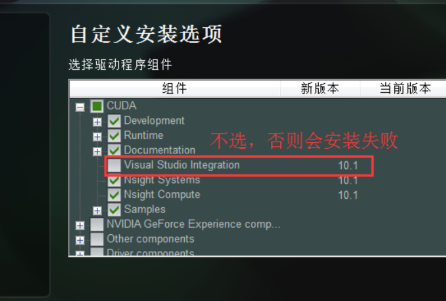
- Click "Next" and follow the prompts to complete the installation. The default path is
C:\Program Files\NVIDIA GPU Computing Toolkit\CUDA\v12.6.
- What if an Error Occurs?
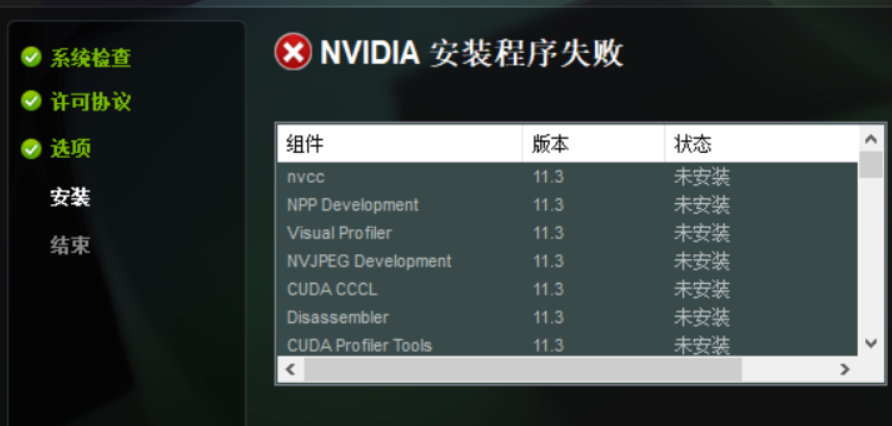
- If the installation is interrupted and shows "Not installed" or "Failed," the options might not have been selected correctly. Re-run the installation program, choose custom installation, and make sure to only select the first line, "CUDA," uncheck everything else, and open CUDA to uncheck
Visual Studio Integration. - If the error persists, skip to the next step to install Visual Studio.
- If the installation is interrupted and shows "Not installed" or "Failed," the options might not have been selected correctly. Re-run the installation program, choose custom installation, and make sure to only select the first line, "CUDA," uncheck everything else, and open CUDA to uncheck
Step 5: Install Visual Studio (If CUDA Installation Fails)
If you unchecked
Visual Studio Integrationin the previous step, there should be no errors. If an error occurs, please install Visual Studio as follows.
Download Visual Studio Community Edition
- Open your browser and go to: https://visualstudio.microsoft.com/zh-hans/free-developer-offers/
- Click "Free download Visual Studio Community" and download the installer.
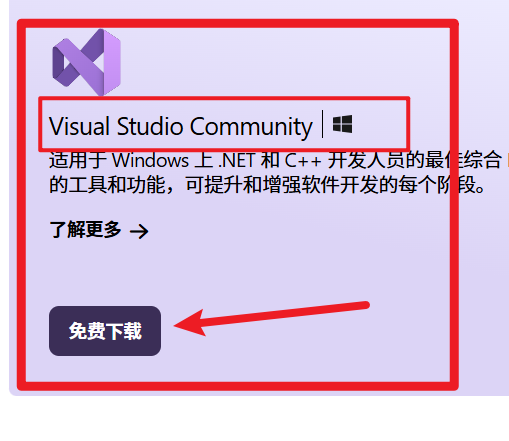
Install the C++ Development Environment
- Double-click the installer, and when the window appears, select "Desktop development with C++."
- Click "Install." It might take tens of minutes. Restart your computer after installation.
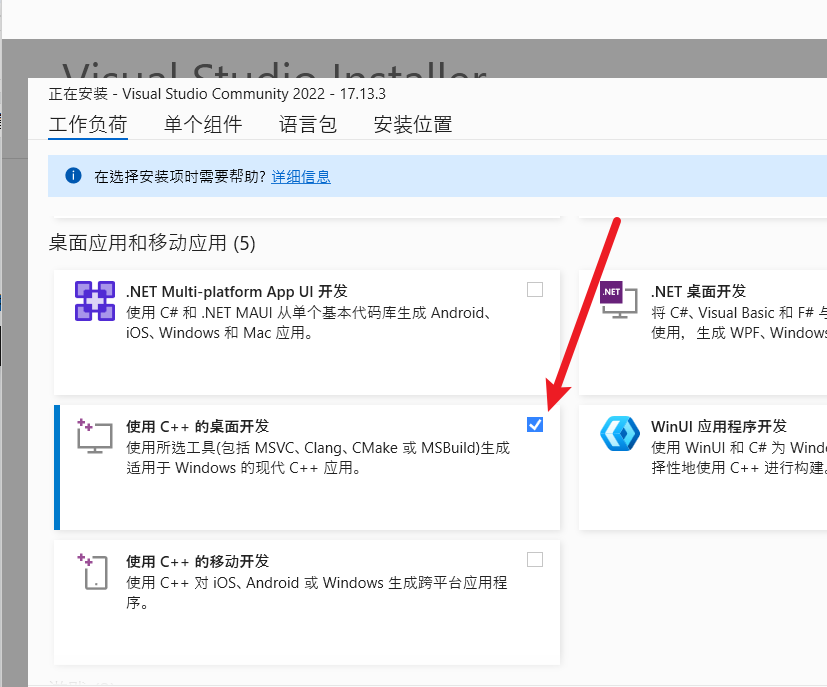
Reinstall CUDA 12.6
- Go back to step 4, re-run the CUDA installer, and select "Runtime" for custom installation. This time, it should succeed.
Step 6: Verify CUDA Installation and Configure Environment Variables
Check if Installation Was Successful
- Open CMD (Windows key + R, type
cmd). - Type:
nvcc -V If it displays
If it displays Cuda compilation tools, release 12.6, V12.6.xxx, it means the installation was successful. If it shows "'nvcc' is not recognized as an internal or external command," you need to add environment variables.
- Open CMD (Windows key + R, type
Add CUDA to Environment Variables
- Right-click "This PC," select "Properties" > "Advanced system settings" > "Environment Variables."
- In "System variables," find "Path," click "New," and enter:
C:\Program Files\NVIDIA GPU Computing Toolkit\CUDA\v12.6\bin C:\Program Files\NVIDIA GPU Computing Toolkit\CUDA\v12.6\lib C:\Program Files\NVIDIA GPU Computing Toolkit\CUDA\v12.6\include C:\Program Files\NVIDIA GPU Computing Toolkit\CUDA\v12.6\libnvvp - Click "OK" to save and close all windows.
- Reopen CMD, type
nvcc -V, and you should see the version information.
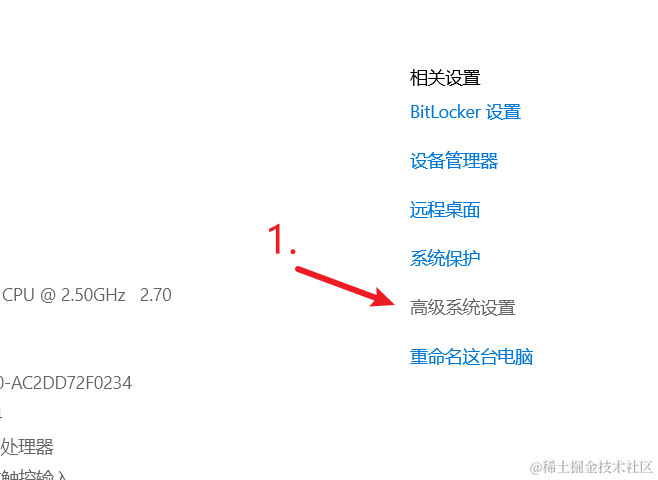
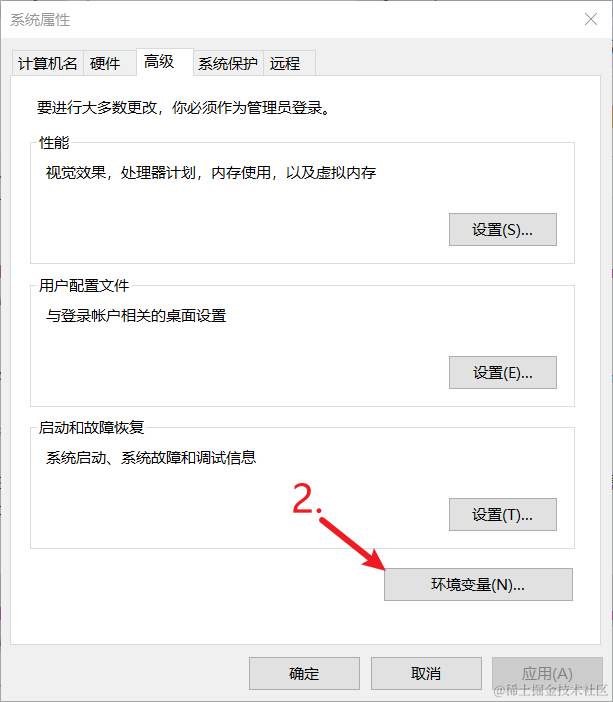
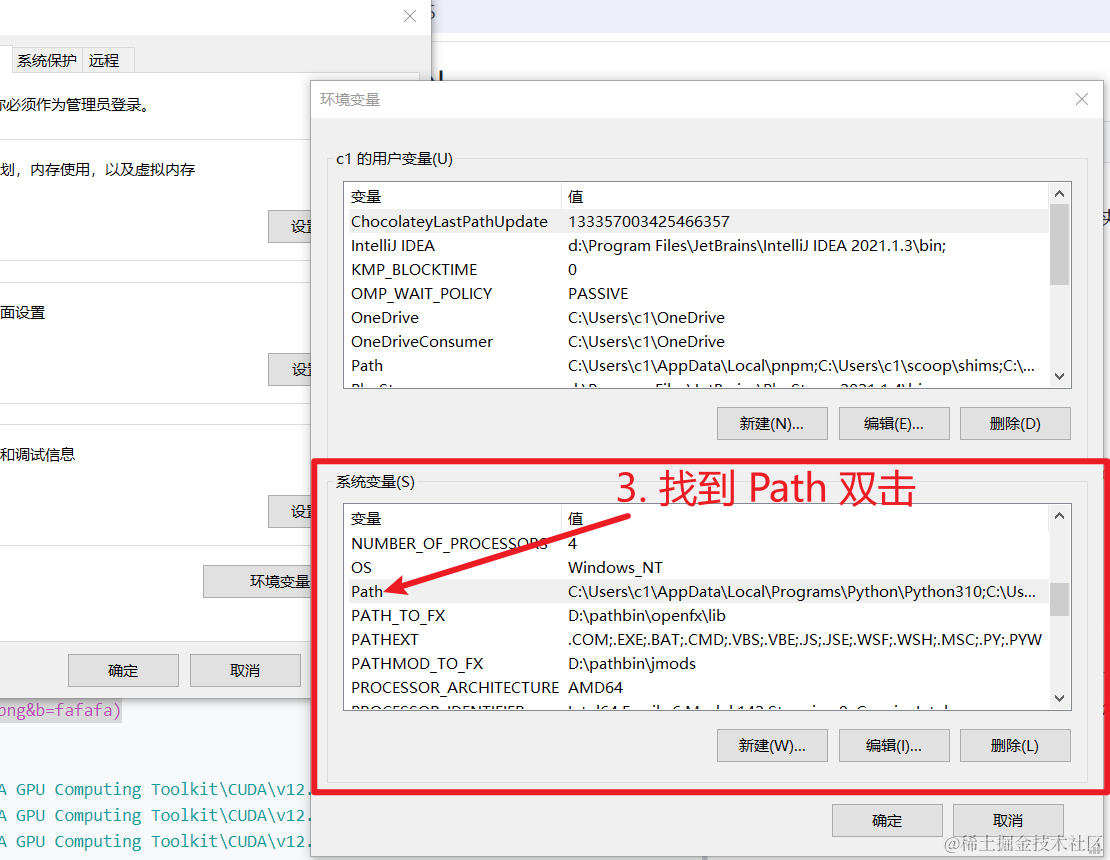
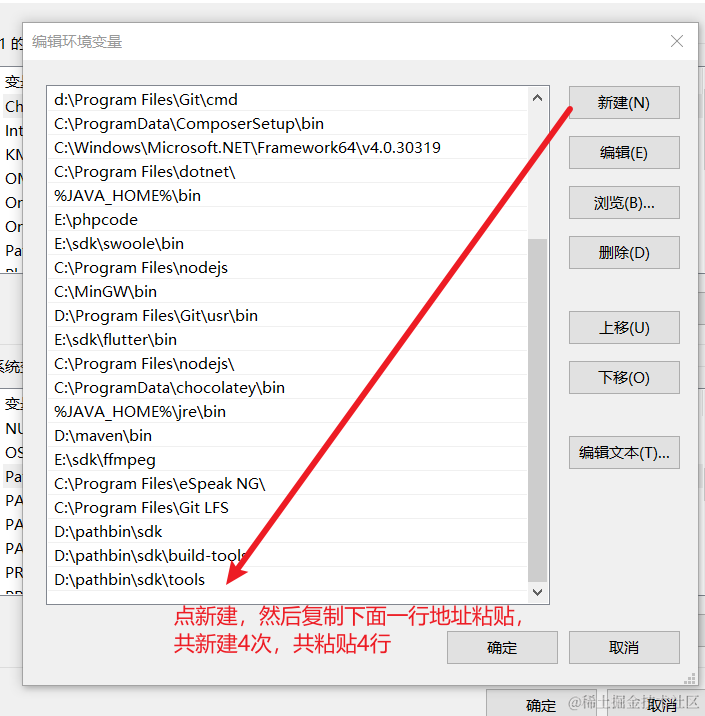
Step 7: Install cuDNN 9.8
- Download cuDNN 9.8
- Open your browser and go to: https://developer.nvidia.com/cudnn-downloads?target_os=Windows&target_arch=x86_64&target_version=10&target_type=exe_local
- You might need to log in to an NVIDIA account (register for free if you don't have one).
- Select "local version" and download the Windows
.exefile.
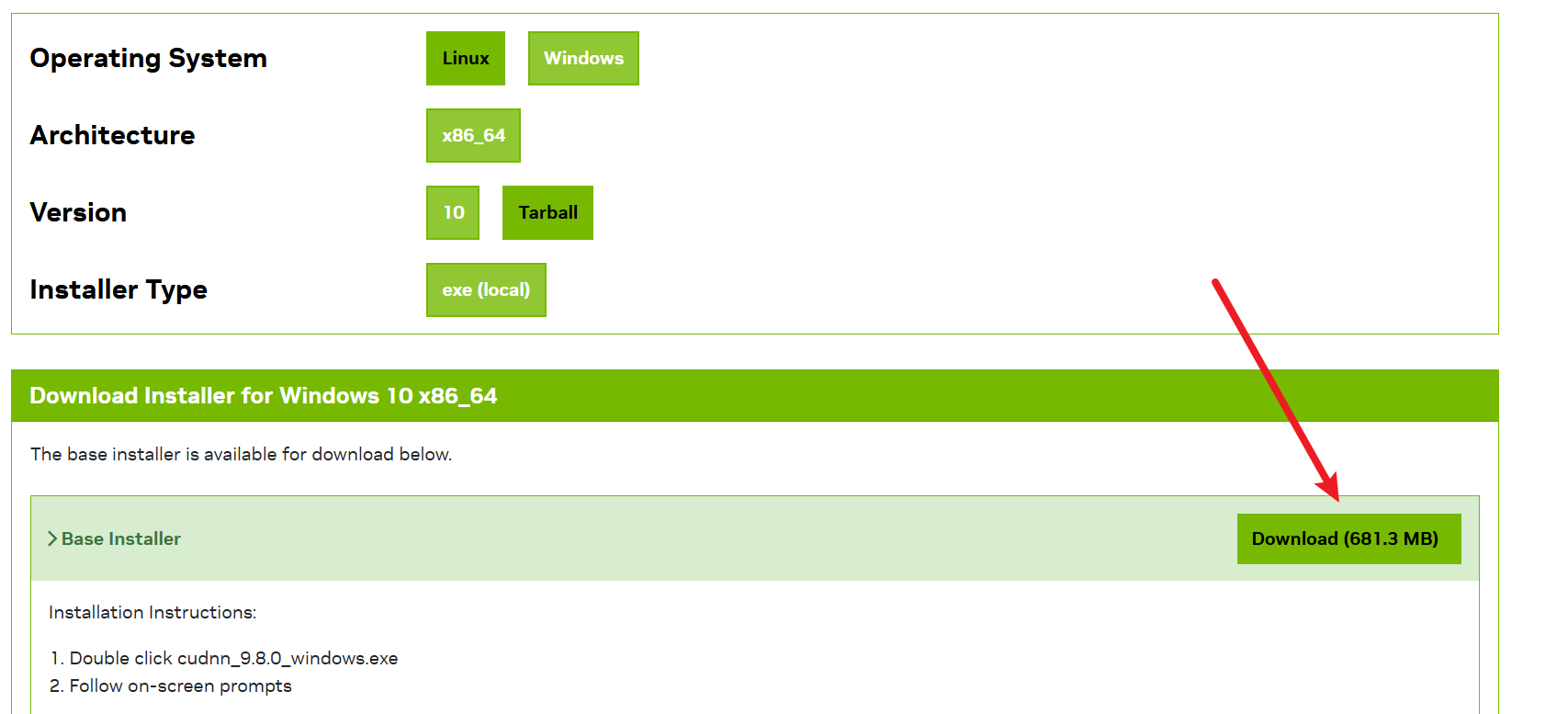
- Install cuDNN
- Double-click the downloaded
.exefile and follow the prompts to install.
- Double-click the downloaded
If cuDNN cannot be used in the program after installation, you can open the installation directory, which is
C:\Program Files\NVIDIA\CUDNN\v9.8by default, and copy thelib,bin, andincludefolders toC:\Program Files\NVIDIA GPU Computing Toolkit\CUDA\v12.6to overwrite.
Finally: Mission Accomplished!
Now CUDA 12.6 and cuDNN 9.8 are both installed! You can start running programs that require GPU support. If there are software instructions (such as running python script.py), navigate to the project folder in CMD and try entering the corresponding command.
